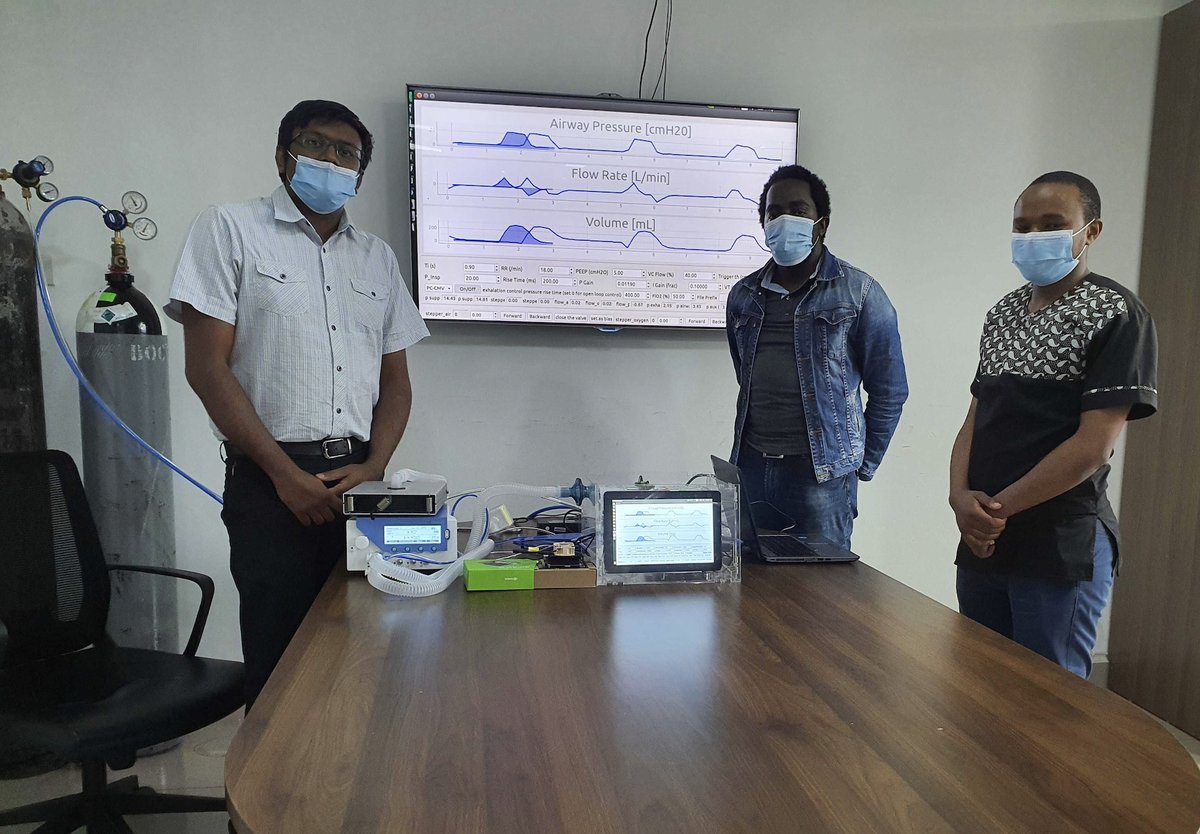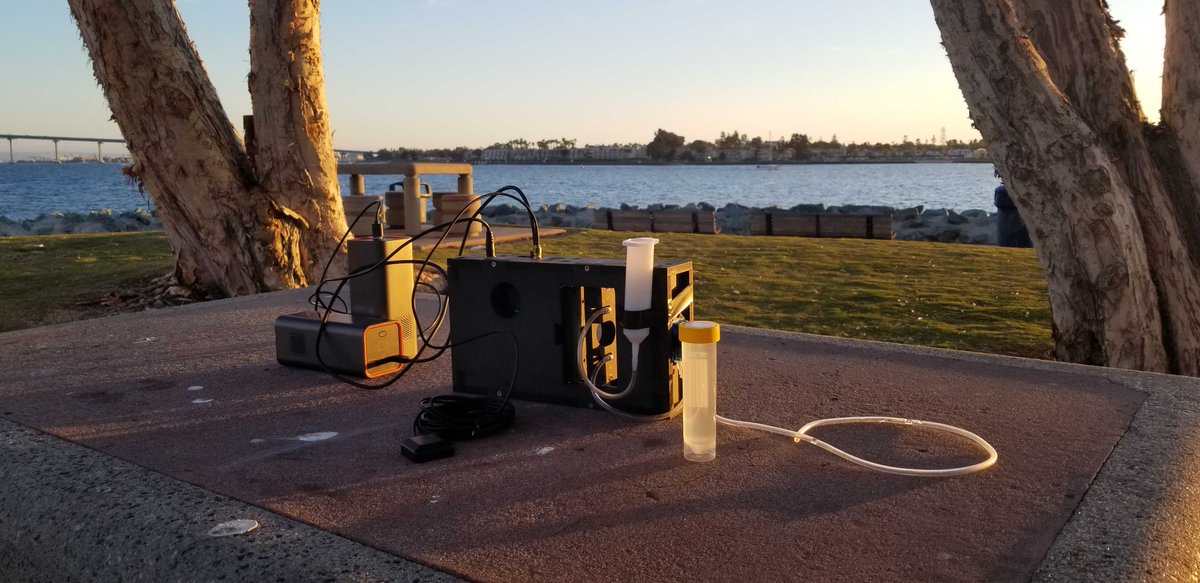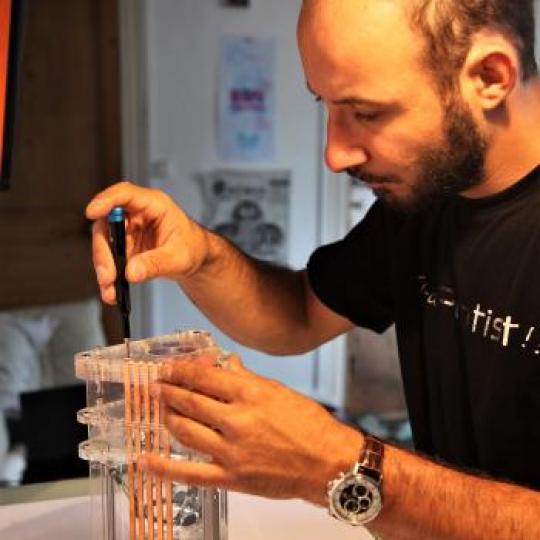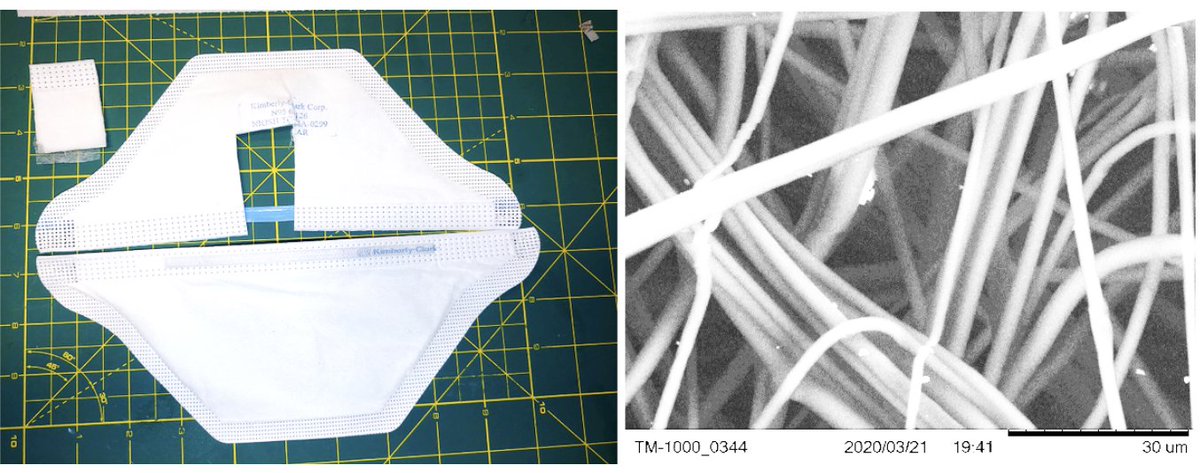
[1/n] "Oxygen" - If you know anyone in India - it's one word you hear over & over. It's a critical life saving supply. In context of COVID surge in India, we are sharing open source design for "pulse dose" O2 conservation device - potential to save 50% O2. Not medical device yet.
[2/n] The idea "pulse dose system" is simple. When you exhale, you don't take in O2 while the tank still delivers. For mild COVID19 patients on nasal cannula - this O2 is wasted. A simple pressure based detection & an electronic valve can release O2 only during inhalation. 

[3/n] The implementation above is simple - and not a medical device. A lot of work still needs to be done and tested clinically. We are releasing the design/implementation in open source - to engage manufacturing partners in an emergency. docs.google.com/document/d/1gN… 

[4/n] This is work with an incredible trio in my lab - @hongquan_li @deepak_me90 @lietk12 who have dedicated every waking minute of last year on critical care and ventilation issues. This is a natural extension of our pez-globo.org effort with @FluidDanamics KaiKuck
[5/n] As you know; the devil of implementation is in details. Medical grade valves are out of stock. For 1 year - we developed a new valve design that can be rapidly manufactured with @BharatForgeLtd - this valve provides a safe interface (no grease etc) for patients. 

[6/n] As we rapidly build a response to emergency situation in India - we have started @IndiaCOVIDSOS - and have built a frugal engineering team. For this project, we need medical device electronics experts, regulatory experts, manufacturing partner and financial support.
[7/n] In the next 24hrs, we will be releasing open source designs for multiple oxygen conservation devices. It's been an incredible partnership at @IndiaCOVIDSOS with clinician behind @OpenCritCareOrg Just like last year, we will document our work on - docs.google.com/document/d/1gN…
[8/n] Help us to deliver solutions to folks gasping for air because of supply shortages & distribution issues - but ALSO build equitable world & opensource implementation of life saving medical solutions with local partners throughout the world. We are exhausted - could use help.
[9/n] We can come out of this crisis - but need to work together. If you are looking to help in the medical crisis in India - consider joining @IndiaCOVIDSOS - look for needs and try solving them. This pandemic has taught us how to work together. So let's fight.
• • •
Missing some Tweet in this thread? You can try to
force a refresh





























